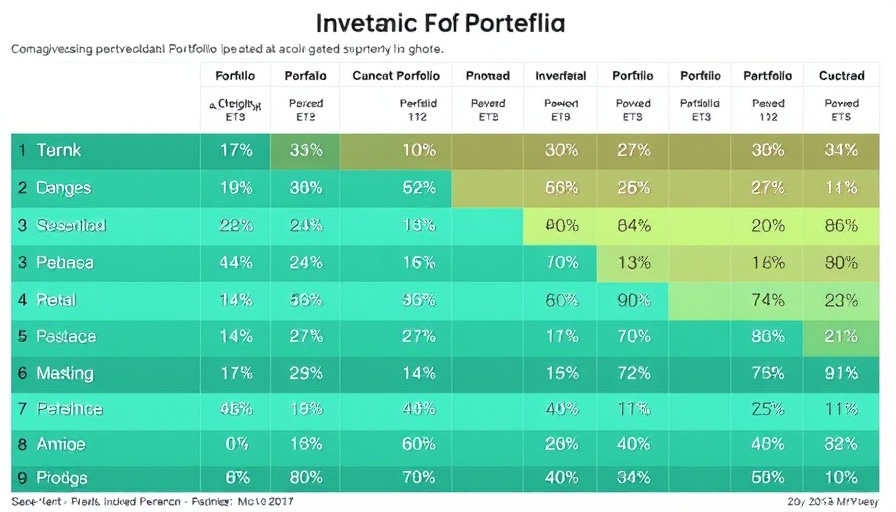
The New Evolution in ETF Investing
BlackRock, the largest asset manager globally, has significantly adapted its strategies by introducing a Bitcoin allocation into its model ETF portfolios. This strategic decision marks a pivotal moment in investment management, particularly for financial advisors navigating a landscape that increasingly embraces alternative assets. By integrating a 1-2% allocation of the iShares Bitcoin Trust ETF (ticker IBIT) into its target allocation portfolios, BlackRock is not just diversifying its offerings but also signaling a cautious optimism towards cryptocurrencies.
Unpacking the 60/40 Model Portfolio
The foundation of BlackRock's model ETF portfolio is rooted in the traditional 60/40 allocation strategy—60% equities and 40% fixed income. This structure has long been considered a benchmark for balanced portfolios. With the recent addition of Bitcoin, however, this model is evolving to integrate elements that cater to both traditional and modern investment paradigms. The inclusion of a low-cost structure with a net weighted expense ratio of just 0.16%, alongside the historical performance data that closely mirrors benchmark indexes, presents a shift aimed at optimizing returns for clients.
The Cost of Managed Portfolios: A Double-Edged Sword
Despite the apparent affinity for low-cost ETF investments, one striking detail emerges from the BlackRock model portfolio: a 3% annual management fee charged quarterly. This significantly affects the net returns for investors, as it compounds the client’s actual earnings over time. Such fees, particularly in the backdrop of a low-cost ETF offer, have sparked lively discussions about the value added by active management versus passive investment strategies. While the gross performance may seem appealing, financial advisors must critically assess whether the cost structure justifies the management's claimed value.
Market Response and Future Predictions
The cryptocurrency market's inherent volatility leads to mixed sentiment among institutional investors. BlackRock's decision to add Bitcoin reflects a long-term bullish view on the cryptocurrency as an asset class, which could redefine investment approaches in traditional asset management. Analysts note that this cautious step may encourage other asset managers to follow suit, possibly paving the way for broader acceptance of cryptocurrencies in institutional portfolios.
Diverse Perspectives on Cryptocurrency Investments
While Bitcoin's potential for high returns is appealing, it brings a host of challenges, including regulatory uncertainties and market volatility. The skepticism amongst advisors is palpable, as ongoing discussions weigh the merits of Bitcoin against its risks. By offering a measured allocation, BlackRock appears to be hedging its bets—allowing clients exposure without the full brunt of the risks associated with cryptocurrencies.
Understanding the Implications for Advisors
For financial advisors, the inclusion of Bitcoin into model portfolios is both an opportunity and a challenge. It positions them to potentially attract clients interested in digital assets while also requiring them to navigate the complexities of these investments. Advisors must stay informed not only about the performance metrics of the portfolios but also about the broader market trends that could affect their clients' investments in the long run.
Conclusion: Taking Action in the Evolving Landscape
The financial landscape is rapidly evolving, and staying ahead requires continuous learning and adaptability. As BlackRock leads the charge into the realm of digital assets, advisors must consider how best to incorporate such innovations into their existing strategies. Engaging with clients about these new options, scrutinizing fee structures, and focusing on diversification could pave the way for successfully navigating the future of investing. Don’t miss the opportunity to evaluate how these adjustments can impact your investment strategies moving forward.
 Add Row
Add Row  Add
Add 



 Add Row
Add Row  Add
Add 
Write A Comment